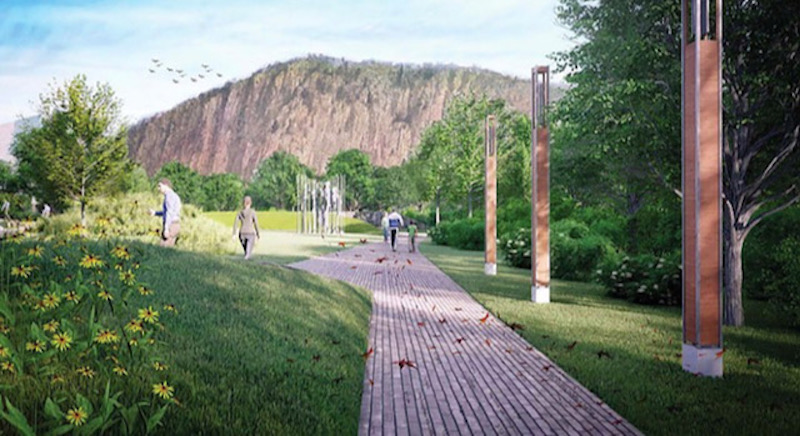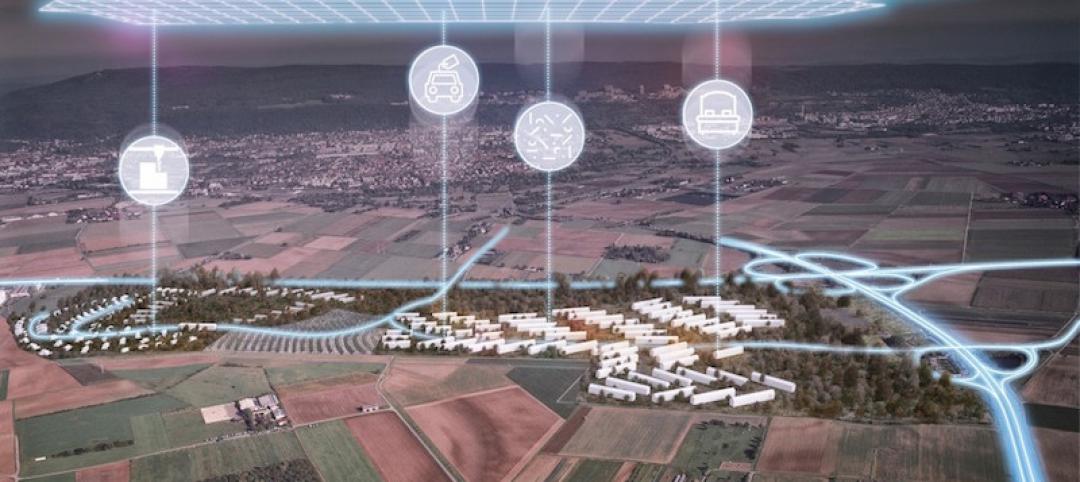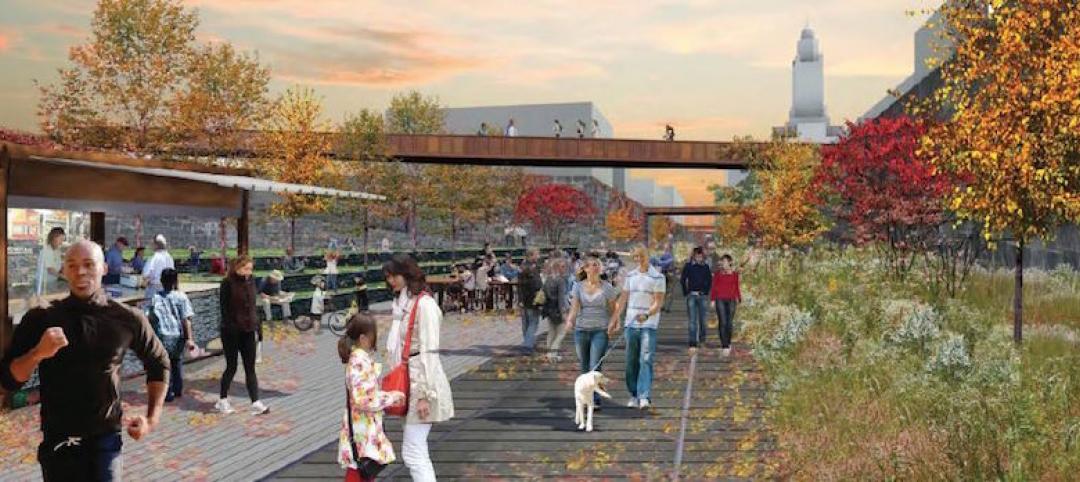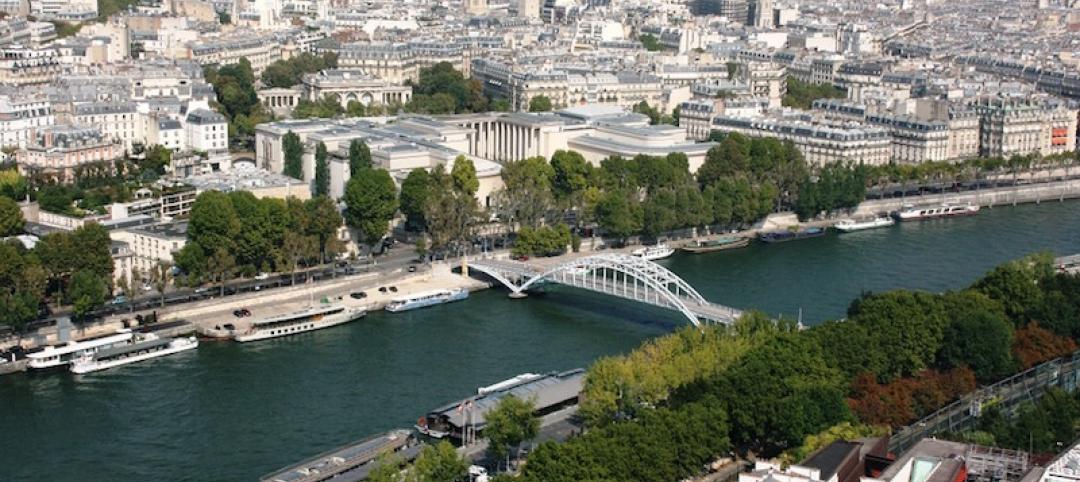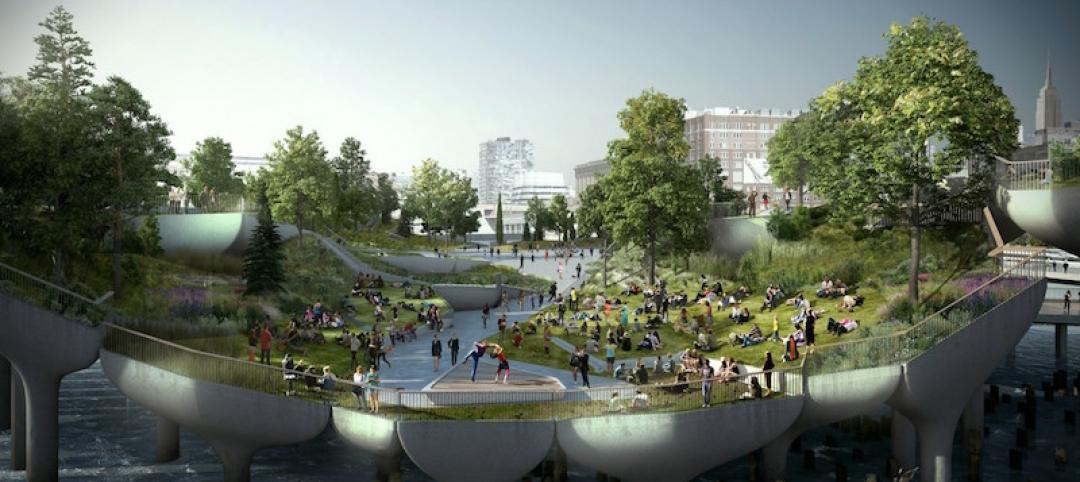Svigals + Partners, an architecture firm that designed the new Sandy Hook Elementary School, has partnered with a group of concerned mothers in New Haven, Conn. to design a Memorial Garden in honor of victims of gun violence.
The garden will provide a path flanked by engraved stone pavers that include the ages and dates of individuals killed in gun violence incidents in New Haven since 1980. The path will lead past a sculpture, titled Lost Generation, before culminating in a circular plaza with stone seating areas and flowering plants.
"The Lost Generation sculpture serves as a reminder of both the fragility and strength that exists within families and communities,” Says Marissa Mead, RA, LEED AP, Director of Art at Svigals + Partners and the design lead for the memorial. “Figurative voids in the piece illustrate the ever-present sense of absence when loved ones are lost to tragedy, and allude to the idea that death has a compounded influence on both current and future generations.”
Near the center plaza, memory tiles will be engraved with images or memories of lost loved ones. Stepped seating will be available throughout the park and a row of lamp post wind chimes near the park’s entrance will help mask traffic noise from Valley Street. The park may also include a footbridge connection to the nearby West Rock trail project.
Marlene Miller Pratt, a New Haven school teacher whose 18-year-old son was killed in a gun violence incident in 1988, led the efforts to build the memorial garden. The park could be completed and open to the public as early as summer 2019.
Related Stories
Urban Planning | Mar 14, 2017
Denmark-based architecture firm gives China the world’s longest elevated bike path
The Xiamen Bicycle Skyway stretches for 7.6 kilometers throughout the central part of the city.
Urban Planning | Feb 9, 2017
Abandoned WWII-era military village to become 'commune for the 21st century'
The village in Heidelberg, Germany, which 16,000 Americans called home at one time, is being redesigned as a commune for up to 4,000 people.
Green | Feb 6, 2017
A to Z: Seoul’s elevated park features 24,000 alphabetized plants
The plants will represent 250 species found in South Korea.
Urban Planning | Jan 17, 2017
Using 'hidden data' to probe urban problems
The Center for Neighborhood Technology has been tackling poverty, housing, transportation, and environmental issues for four decades.
Architects | Nov 11, 2016
Six finalists selected for London’s Illuminated River competition
The competition is searching for the best design for lighting the bridges of central London.
Building Tech | Nov 9, 2016
Dubai to Abu Dhabi in 12 minutes: A hyperloop from Hyperloop One and BIG could make it possible
The pods can reach speeds of up to 1,100 kilometers per hour.
Urban Planning | Nov 4, 2016
Rail Park breaks ground in Philadelphia
The project is finally moving forward after nine years in the making.
Urban Planning | Oct 27, 2016
Paris plans to transform the right bank of the river Seine into car-free pedestrian zone
Drivers are worried the move will cause an increase in traffic congestion.
Urban Planning | Oct 27, 2016
The lawsuit blocking the construction of Pier 55 has been thrown out
Construction on the $130 million project can now proceed as planned.
Urban Planning | Oct 20, 2016
Despite troubled development, Masdar City forges ahead
The detailed master plan for Phase 2 of Masdar City has been unveiled by CBT.


